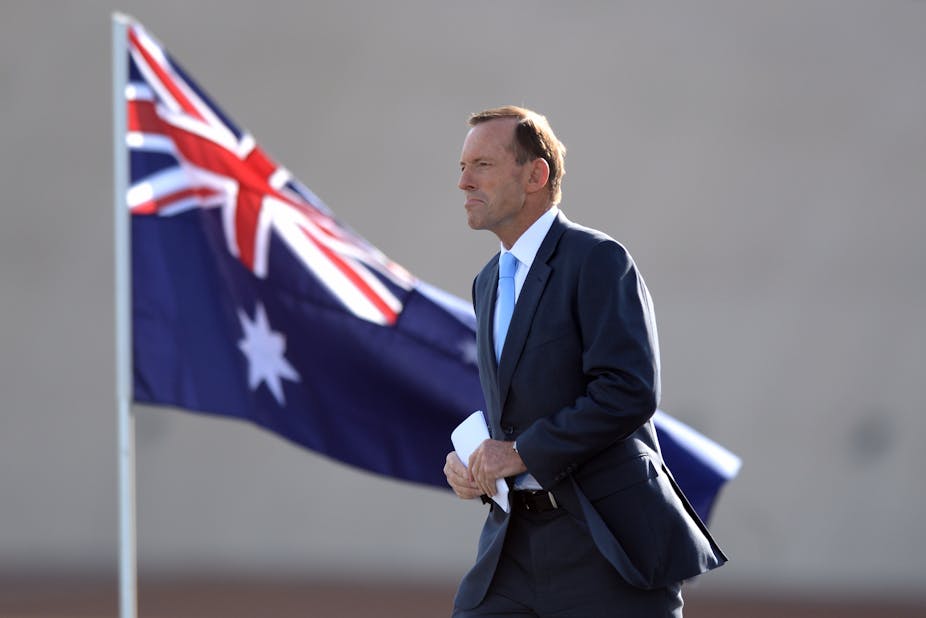Prime Minister Tony Abbott’s address to the World Economic Forum in January delivered a plain, pragmatic message.
The best remedy for the uneven recovery of the world economy, according to Abbott, is a formula of free markets and minimal government intervention. It was text book neo-liberal conservatism underscored by a quote from conservative advocate Roger Scruton.
Markets are the proven answer to the problem of scarcity.
They rest, as Roger Scruton has recently observed, “upon the kind of moral order that arises from below as people take responsibility for their lives, learn to honour their agreements, and live in justice and charity with their neighbours”.
The words “society” or “social” were entirely absent from Abbott’s speech. So there were no references to ideas such as “social contract” or “social inclusion” and nothing on “social equity”, or its companion “equality of opportunity”.
The question here is whether society and the social can be so readily erased from the script for conditions of high and sustainable economic and employment growth. According to leading international authorities on economic development they cannot.
A global top three issue
A persistent theme through the current deliberations of organisations including the OECD, the World Bank, International Labour Organisation, and the International Monetary Fund (IMF), is that governments at both national and international levels must seriously tackle issues of social and economic inequality as part of growth and development strategies. The World Economic Forum itself identifies widening income disparities and persistent structural unemployment in the top three of its issues of global significance for 2014.
A recent report published by the World Bank argues “shared prosperity is strongly correlated with overall prosperity”. It shows that inequality combined with constraints to equal opportunity have a negative effect on growth through factors including losses to human capital, negative morbidity and mortality outcomes, and reduced labour productivity. These themes are echoed in a new IMF report which shows that tackling persistent gender inequalities in the workforce is a crucial element of improving GDP growth.

Prime Minister Abbott’s WEF speech can be juxtaposed with President Obama’s State of Union address delivered several days later on January 28.
Obama’s key message is that there is a divide in the United States that has been growing over the past 30 years, exacerbated by the global financial crisis, and unresolved through recent economic growth and record levels of business profitability. The divide is embedded in the labour market where there have been massive losses of middle income jobs and reduced opportunities for upward social mobility.
The same story is painted by the OECD across member countries in its 2013 report on inequality and poverty. The International Labour Organisation’s Global Employment Trends 2013 also reflects consternation on the slow recovery of middle level jobs following the financial crisis which has translated into growing inequality in many countries.
The role of the super rich
Robert Reich’s new documentary Inequality for All explores why inequality has been so crippling in the USA. While the fruits of growth are disproportionately absorbed by the wealthy through profits, there is depressed demand for goods and services by the rest of society. The small minority of the super rich do not drive consumption in the way that a thriving middle class can and this effect dampens economic activity. It also stalls upward social mobility.
Oxfam goes further in its new report, Working for the Few, released for the World Economic Forum. It examines the link between “capture” of the very wealthy of the political process where there is high inequality which subsequently corrupts the operation of markets and ultimately deadens and distorts growth.
Tony Abbott might argue that the scenarios painted in these reports do not apply in Australia. But the OECD report on inequality and poverty shows that Australia has a robust level of income inequality, not as high as in the USA or Mexico, but certainly not at the low end of a number of European countries (see table 4 of the report).
Australian inequality is real
In fact, according to the latest ACOSS poverty report around 13% of the Australian population were living below a poverty line of 50% of median income. Using a poverty line of 60% of median income, as is the convention in many countries, the poverty rate is around 20-22% (something addressed in a recent fact check in The Conversation).
The Prime Minister’s WEF address raises some troubling questions. As the host of the G20 in 2014, he has indicated there will be little traction for the difficult and complex issues of growing inequality and the impact this has on economic growth, employment outcomes, and income distribution in many countries including Australia. The evidence from the major international economic policy institutions and the experience of the US testifies that the “free market-small government” formula has well and truly passed its use by date.

